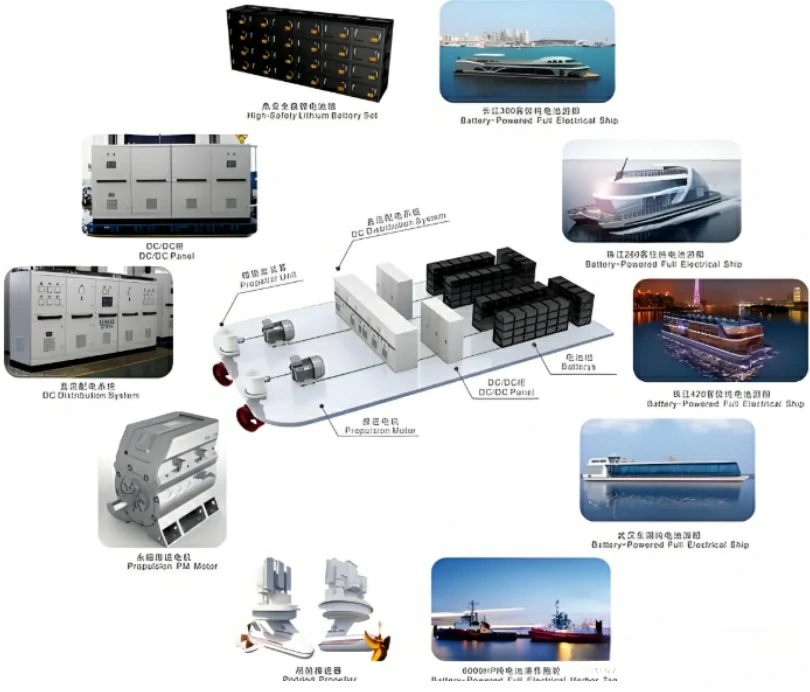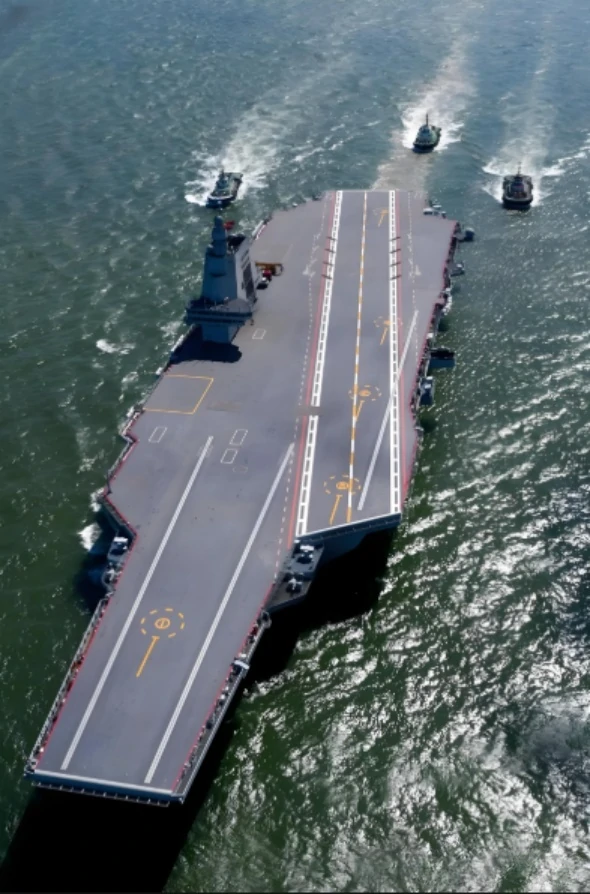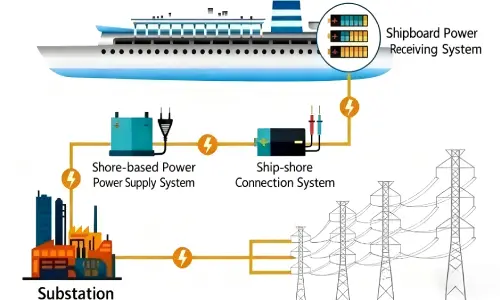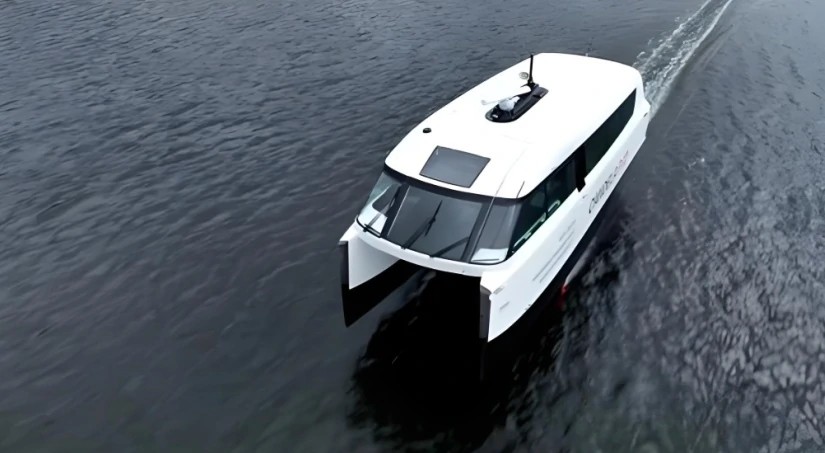In today’s era of green, low-carbon, efficient, and intelligent shipping, all-electric ships are gradually becoming the focus of industry development. As an independent power system, all-electric ships perfectly integrate power generation, transmission, distribution, energy storage, power consumption, and control. This innovative model not only reshapes the power architecture of ships, but also opens up a new path for the sustainable development of the shipping industry. The independent power system of all-electric ships breaks the relative independence of each part of the traditional ship power system and achieves a high degree of integration. The power generation link provides the source of electricity for the entire system, the transmission link transmits electricity efficiently, the distribution link reasonably distributes electricity to various power-consuming equipment, the energy storage link plays a role in regulating the balance between power supply and demand, the power consumption link is the final consumer of electricity, and the control link is like the “brain” of the system, accurately coordinating the work of each part to ensure the stable and efficient operation of the entire power system.

The core of an all-electric ship lies in its complete power system ecosystem:
Power generation system: usually a combination of diesel generators, gas turbines or renewable energy (such as solar energy, wind energy)
Transmission network: Medium voltage DC or AC distribution system for efficient energy transmission
Power distribution device: intelligent power distribution and management center
Energy storage unit: lithium battery, supercapacitor, etc., to balance load fluctuations
Electrical equipment: electric propulsion system, shipboard equipment and other auxiliary systems
Control system: integrated power management and automation control platform
This integrated design enables the vessel to achieve optimal energy distribution, lower emissions, and increase reliability and operational flexibility

Its revolutionary value is reflected in three dimensions
First, on the technical level, the integrated power system replaces the bulky mechanical transmission chain, giving ship design unprecedented layout freedom;
Secondly, in terms of environmental protection, the plug-and-play nature of multiple clean energy sources reduces the carbon emission intensity of ships by 40%-60% compared with traditional power;
Finally, in terms of operational economy, modular maintenance reduces life cycle costs by more than 25%.
Case 1: China’s “Fujian” aircraft carrier : the world’s first engineered medium-voltage DC power grid ( 12kV DC)
A multi-generation power generation matrix combining gas turbines , lithium-ion batteries, and fuel cells, such as the 20MW power generation unit and 12MWh energy storage system deployed on China’s Type 003 aircraft carrier, can simultaneously support electromagnetic catapult launches (with an instantaneous power output of 45MW) and conventional navigation. This architecture enables ships to offer “energy as a service” capabilities. A study by DNV GL shows that the modular design reduces power system modification cycles by 60%, making it particularly well-suited to meeting future demands for hydrogen and ammonia fuels.


Case 2: Norway’s Yara Birkeland electric container ship : The power generation system is based on shore power and onboard battery packs, and is quickly replenished with power through efficient charging facilities at the port.
The Norwegian electric container ship “Yara Birkeland” is the world’s first fully electric, autonomous container ship. Its power generation system relies on shore power and onboard battery packs, with rapid replenishment of energy at port via efficient charging facilities. The transmission and distribution system utilizes advanced smart grid technology, precisely allocating power based on the priorities and actual needs of onboard equipment. The energy storage system utilizes large-capacity lithium batteries, providing ample power for the ship’s long voyages. In terms of control technology, the ship incorporates an integrated autopilot system, enabling autonomous navigation and cargo transport through precise power control and navigation algorithms. This ship marks a major breakthrough in the intelligent and automated development of fully electric ships, setting a benchmark for the future development of the shipping industry.
Case 3: Japan’s “Sunflower Shiretoko” electric ferry: The power generation system uses a high-efficiency diesel generator set and battery hybrid mode
Japan’s “Sunflower Shiretoko” electric ferry is a significant example of green shipping. The ship’s power generation system utilizes a hybrid system of efficient diesel generators and batteries, flexibly switching between power generation modes based on actual conditions during navigation. The optimized transmission and distribution systems ensure stable transmission and efficient distribution of electricity. The energy storage system utilizes lithium batteries, which store electricity while the ship is docked and provide auxiliary power support during navigation. Electrically powered equipment includes the ship’s air conditioning, lighting, and propulsion systems. Advanced control technology enables intelligent management of the ship’s power system, reducing fuel consumption and exhaust emissions, and improving the ship’s environmental performance.


Case 4: US “Water-Go-Round” electric ferry
The US- based electric ferry “Water-Go-Round” is a pioneering example of electric marine technology in the United States. The vessel utilizes large-capacity lithium batteries for energy storage, relying on shore power for power generation. Its power system utilizes a modular design for transmission and distribution, facilitating maintenance and upgrades. Real-time monitoring of power usage enables precise control of power equipment, improving energy efficiency. The vessel’s operational performance demonstrates the potential of electric ferries for urban inland waterway navigation, providing a valuable reference for the green transformation of the US shipping industry.
Case 5: Denmark’s “Ellen” all-electric ferry
Denmark’s “Ellen,” the world’s longest all-electric ferry, entered service in 2019, connecting Esbjerg and Finnøya. Its record-breaking performance includes:
4.3MWh battery capacity, no backup generator;
A single charge can travel 40 nautical miles (about 74 kilometers). Reduce CO2 emissions by 2,000 tons per year. Charging power up to 4MW
The “Ellen” demonstrates the full feasibility of all-electric ships in short-distance shipping and provides a realistic template for fossil fuel-free shipping.


Case 6: China’s “Three Gorges Hydrogen Boat 1” hydrogen fuel cell ship
The “Three Gorges Hydrogen Boat 1”, launched in 2023, is China’s first hydrogen fuel cell all-electric ship and is a milestone:
Using 500kW hydrogen fuel cell system
Maximum speed 28km/h, cruising range 200km
Equipped with a 720kWh lithium battery as auxiliary power
Truly achieve zero discharge (only water is discharged)
The project explores the application prospects of hydrogen energy in all-electric ships and provides new ideas for the decarbonization of inland shipping.
Advantages and Challenges of Independent Power System Integration for All-Electric Ships
The integration of independent power systems for all-electric vessels offers numerous advantages. First, it achieves zero or low emissions, effectively reducing environmental pollution from the shipping industry and aligning with global sustainable development requirements. Second, through intelligent control technology, it optimizes power usage, reduces operating costs, and improves energy efficiency. Furthermore, an integrated power system streamlines the ship’s equipment layout, reduces space and weight, and improves stability and safety.
However, the integration of independent power systems for all-electric vessels also faces challenges. For example, the energy density and endurance of battery technology still need to be improved, and the construction of charging facilities requires significant capital investment and infrastructure development. Furthermore, the reliability and safety of the power system must be continuously enhanced to cope with complex marine environments and navigation conditions.
As independent power systems, all-electric ships, with their integrated approach to power generation, transmission, distribution, storage, consumption, and control, present new development opportunities for the shipping industry. Numerous case studies, both domestically and internationally, demonstrate the enormous potential of all-electric ships in environmental protection, energy conservation, and intelligent operation. Despite challenges, with continued technological advancement and development, all-electric ships are expected to occupy a significant position in the future shipping market and make a significant contribution to building a green and sustainable shipping system.


